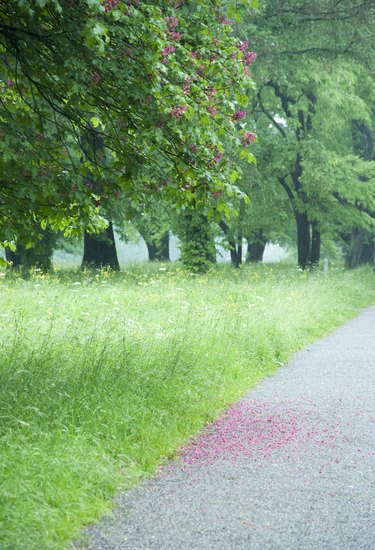
Horse chestnut trees are look-alike trees. Their shapeliness makes people think they're buckeye trees. Their chestnuts look strikingly like the edible sweet chestnut, but they taste terrible. If they look so much like other trees, how can you tell if you're looking at a horse chestnut tree?
Location
Video of the Day
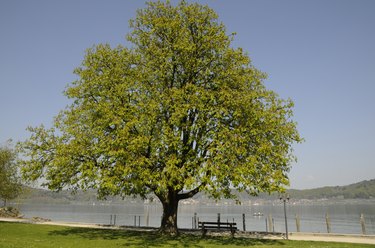
Horse chestnut trees grow in USDA zones 3a to 6b. That's an area approximately from the Canadian border to southern Missouri, excluding desert and mountain areas and the Pacific Coast. Horse chestnut trees thrive where they can get sufficient amounts of water.
Video of the Day
Leaves
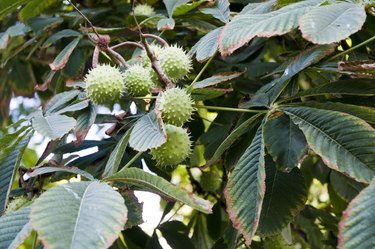
Look at the leaves. If they are "palmate," meaning the leaves radiate out from a center point like spokes on a wheel, there is a good chance that the tree in question is a horse chestnut tree. When new leaves unfold, they are a bright green and they darken over time.
Bark
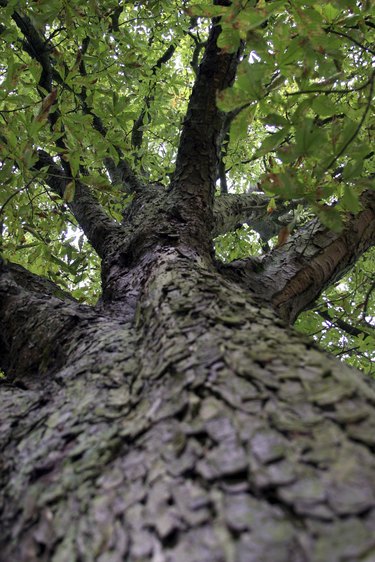
Check out the bark. Horse chestnut bark is dark gray and wart-like. Up close, it appears as though the cracked bark has been chiseled, revealing smooth patches.
Flowers
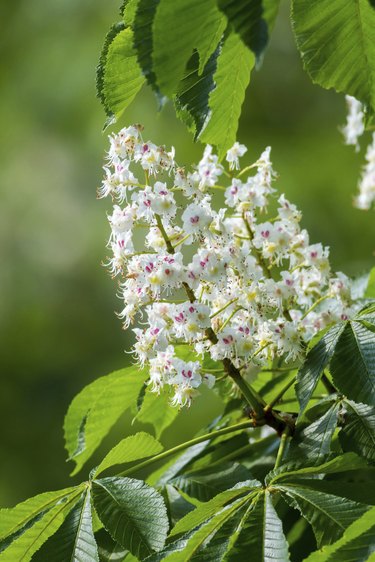
White or pink flowers, with starry bursts of pink and yellow, bloom in late spring. The cone-shaped bunches are known as "candles," each candle measuring about 5 inches in length. The flowers have a sweet, woody scent.
Chestnuts
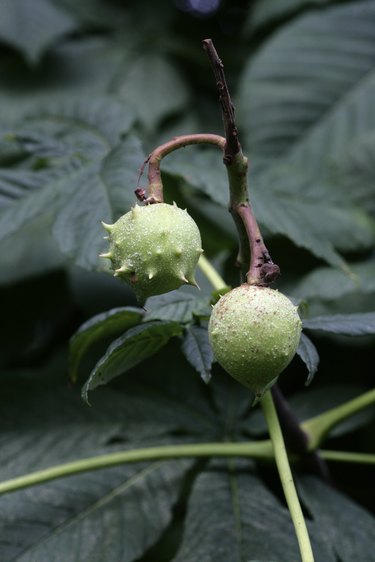
Spiny green pods contain from one to three seeds. The seeds are what we recognize as smooth, brown chestnuts. Horse chestnuts are also known as conkers, named for a two-player game in which one player tries to break the other player's chestnut.